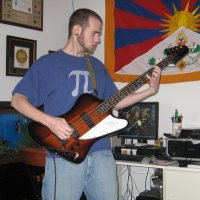I was excited yesterday when I read about the brightest observed supernova on Ars Technica. Later when I read some more about it on CNN, I noticed they had talked to Mario Livio. That name rung a bell, and not just because I have a slightly more than casual interest in astrophyics, cosmology, and mathematics. He also wrote a book that I read recently about the number phi (1.6180339887...), better known as the Golden Ratio. Its appearance everywhere in nature and mathematics and the story of its discovery, use, and misuse is really quite amazing, especially considering the wide variety of places it pops up. Livio argues that's its more important than well-recognized numbers like e and pi. I suppose that depends on your field. As an EE, I have to say that e and pi have been a lot more useful to me (besides just on license plates) than phi, though certainly phi might be more interesting. In any case, I was excited by the fact that I read and understood a book by an astrophysicist (and one somewhat less well-known than Dr. Hawking) that was interviewed by CNN about something as amazing as the brightest supernova ever observed by us.

About me
- I'm Rev. Adam
- From Oakton, Virginia, United States
Twitter Updates
Blogs
Links
Search
Archives
- December 2002
- January 2003
- February 2003
- March 2003
- April 2003
- May 2003
- June 2003
- July 2003
- August 2003
- September 2003
- October 2003
- November 2003
- December 2003
- January 2004
- February 2004
- March 2004
- April 2004
- May 2004
- June 2004
- July 2004
- August 2004
- September 2004
- October 2004
- November 2004
- December 2004
- January 2005
- February 2005
- March 2005
- April 2005
- May 2005
- June 2005
- July 2005
- August 2005
- September 2005
- October 2005
- November 2005
- December 2005
- January 2006
- February 2006
- March 2006
- April 2006
- May 2006
- June 2006
- July 2006
- August 2006
- September 2006
- October 2006
- November 2006
- December 2006
- January 2007
- February 2007
- March 2007
- April 2007
- May 2007
- June 2007
- July 2007
- August 2007
- September 2007
- October 2007
- November 2007
- December 2007
- January 2008
- February 2008
- March 2008
- April 2008
- May 2008
- June 2008
- July 2008
- August 2008
- September 2008
- October 2008
- November 2008
- December 2008
- January 2009
- February 2009
- March 2009
- April 2009
- May 2009
- June 2009
- July 2009
- August 2009
- September 2009
- October 2009
- November 2009
- December 2009
- February 2010
- March 2010